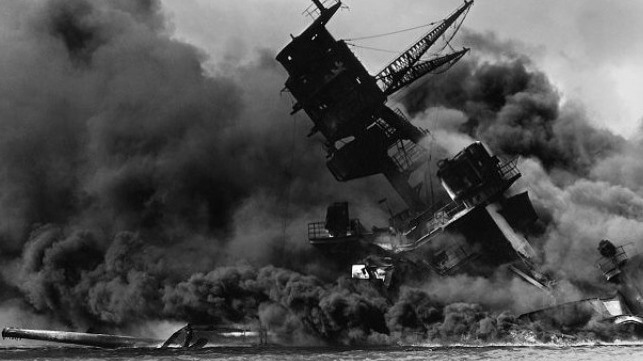On Pearl Harbor Day, U.S. Navy Looks at Lessons-Learned

On December 7, the U.S. pauses to remember the "date which will live in infamy" - the day of the Japanese surprise attack on Pearl Harbor, which pulled the United States into the Second World War. More than 2,400 American servicemen and civilians were killed in the raid on the island of Oahu - the majority of them Navy Sailors and Marines. The attack sank or damaged eight battleships, three destroyers and three cruisers and destroyed nearly 190 American aircraft.
As the years go by, a dwindling number of Pearl Harbor survivors remain to bear witness to the attack. The youngest men eligible to be servicemembers in 1941 would now be 98 years old. At this year's celebration, just a handful of survivors were able to travel and attend the ceremony at the National Park Service's USS Arizona Memorial in Pearl Harbor.
Though damaging, the Japanese attack fell short of impeding America's reach in the Pacific. Pearl Harbor's base infrastructure and fuel tanks were left mostly intact, and the warships that sank were in shallow water, facilitating salvage and repairs. In addition, none of Pacific Fleet's three aircraft carriers were in the harbor at the time of the strike, and their survival was critical to the U.S. Navy's ability to retake the initiative and roll back Japan's presence in the Pacific.
Pearl Harbor's lessons are key for the U.S. Navy as it once again faces the possibility of conflict in the Pacific. In a speech at the Navy League Center for Maritime Studies on Tuesday, Secretary of the Navy Carlos del Toro examined the takeaways from the attack and parallels with the Navy's current challenges.
On the day before the raid, there were weak points in the Navy's readiness, but the service had also invested during peacetime to get ready for war. A substantial submarine fleet had been built up and was stationed on the U.S. West Coast, ready to strike Japanese warships and merchant shipping. The carrier fleet was at sea. And the Naval War College had been planning for decades to get ready for a full-scale conflict in the Pacific.
"If another Pearl Harbor arrives tomorrow, are we ready? That’s the urgent question that drives my strategic leadership and thinking every day. Let me assure you, I wake up every day thinking about China, and I go to bed every night thinking about China," said del Toro. "And from every ship and facility I have visited, every operation I have observed, and every Sailor and Marine I have met, I am confident the answer is yes."
The secretary pointed to the buildout of the attack sub fleet and new investments in amphibious warfare, including a new class of Stern Landing Vessels to get Marines onto the beach. He highlighed new efforts in developing high-tech weapons, particularly laser systems and unmanned vehicles. And he said that the next generation carrier USS Gerald R. Ford "performed magnificently" on its long-awaited first deployment.
"Today’s Navy is far more powerful, far more integrated, far more connected, and far more distributed than ever before," del Toro said. "That provides more options to our Combatant Commanders, and more reasons for the totalitarians of the world to think twice."
